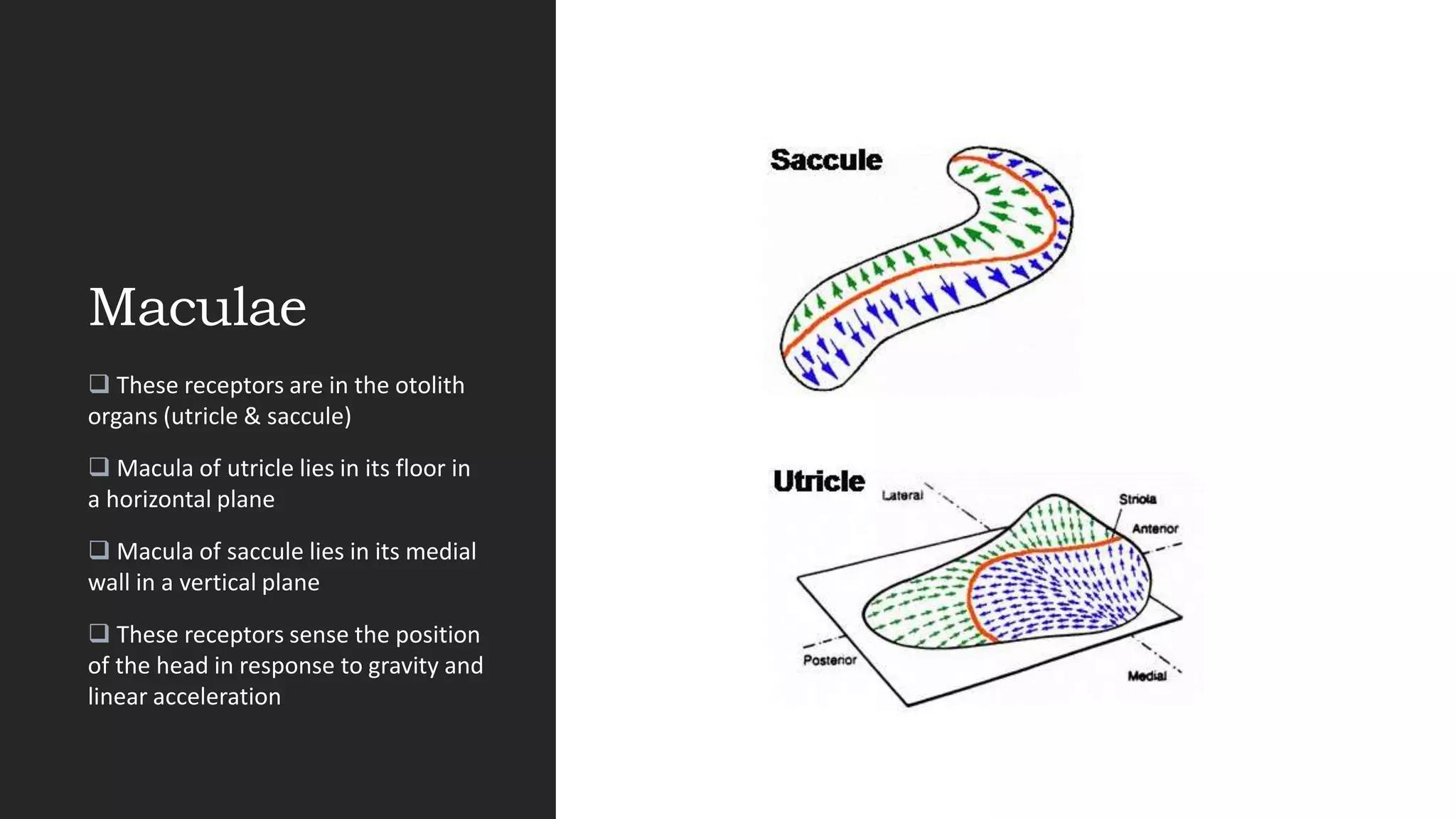The vestibular system provides important sensory information about head movement and orientation. It consists of semicircular canals and otolith organs that detect rotational and linear acceleration. The vestibular system generates reflexes to stabilize gaze and posture. It feeds information to the brain which processes inputs from vestibular, visual, and proprioceptive systems to coordinate eye movements and maintain balance. The vestibular system is essential for spatial orientation, navigation, and regulating other bodily functions.

























